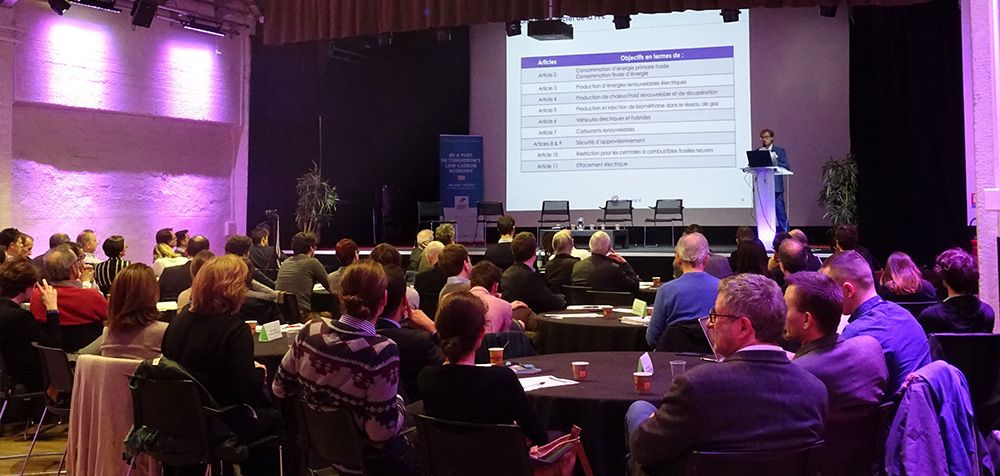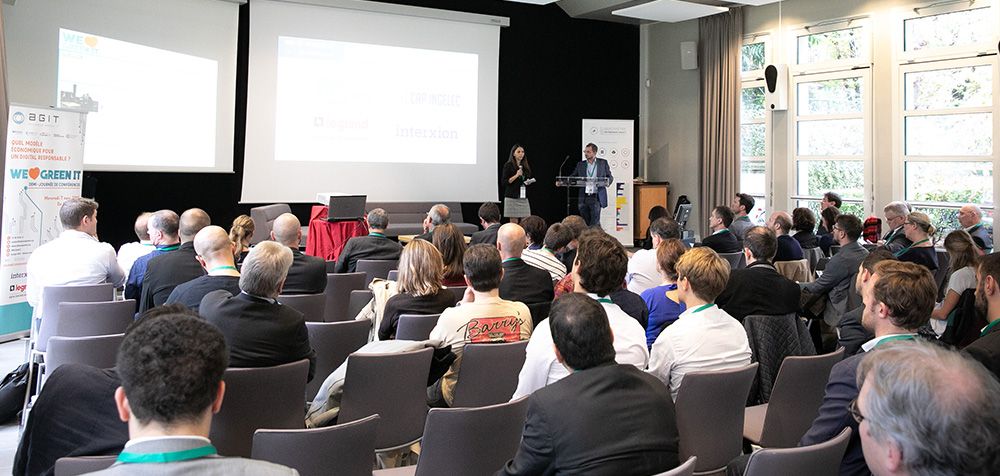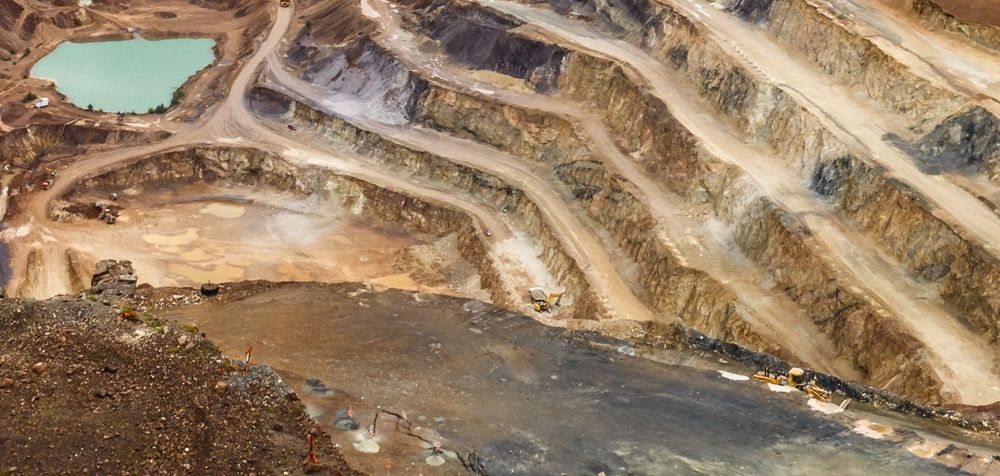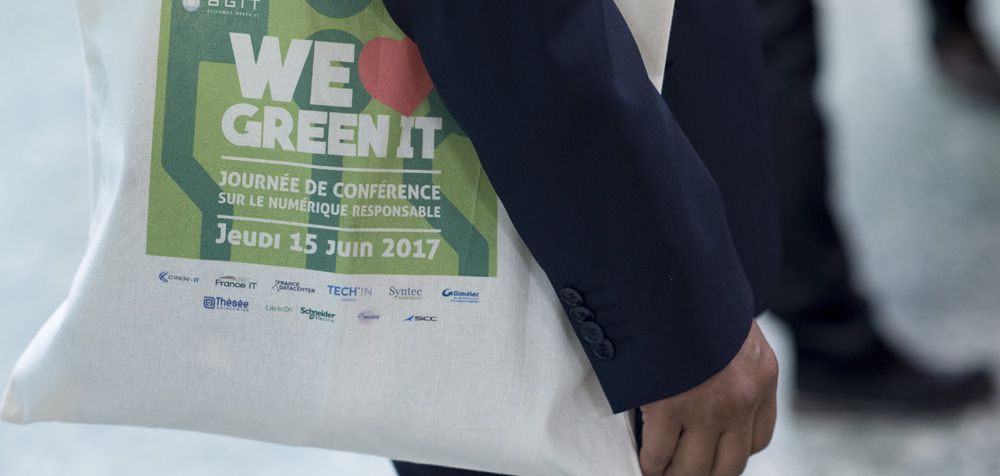[Insights] The ambiguous role of digital
![[Insights] The ambiguous role of digital](https://www.eclaira.org/data/sources/users/3/regardscroise.webp)
MAXIME FOUI, “LEAN ICT” PROJECT MANAGER FOR THE SHIFT PROJECT THINK TANK. THE SHIFT PROJECT'S WORK MEETS AN URGENT NEED TO IDENTIFY THE MAIN AND MOST EFFICIENT LEVERS FOR KICK-STARTING THE ENERGY TRANSITION IN EUROPE.

In October 2018 The Shift Project published a report entitled “Lean ICT1 - towards digital sobriety”. Why was The Shift interested in digital and its environmental impact?
The environmental impact of digital has been identified as a central issue, inseparable from the debate on energy and environmental transition. The question of the environmental cost of digital technology has been very seriously posed for the past ten years, particularly in specialized sectors that have come to grips with the subject. The general public is gradually becoming aware of it as they hear about the impact of data centres, smartphones and rare-earth metals. But quantitative studies have not made it clear whether digital is more of an asset or an obstacle to the energy transition
What are your main findings regarding the studies carried out?
Digital offers exceptional opportunities for the energy transition through smart grids, smart buildings, smart cities and so on, and in terms of optimizing the use of resources. It is a powerful tool for developing a circular economy but its environmental cost is not negligible. Our main observation is this: with the present trend, digital consumption is not sustainable. Digital technology is probably not a good tool for the environment. Today, external factors related to the production and consumption of digital tools are not taken into account. We are not taking account of the fact that to make the opportunities created by digital technology possible, we must use the very resources that we are hoping to save by using digital technology.
How can the environmental impact of digital be reduced?
The Shift Project is proposing a sobriety scenario that seeks to limit the production and consumption of digital tools and data with the aim of reducing the growing energy consumption of digital to a similar rate to that of other sectors. If no strategy is put in place, by 2025, the digital sector could represent between 7 and 8% of global greenhouse gas emissions, the equivalent of the emissions of the motor vehicle sector today. Our report as a whole and our recommendations are in favour of a circular economy and encourage more systemic thinking. Technically, this means working on the traceability of components: a major step to make digital tools repairable and recyclable, as part of a philosophy to extend the service life of products and a life-cycle approach.

What are the levers to become part of digital sobriety?
Tracing as many different elements can only be made possible with digital tools. As a result, digital tools are indispensable for moving towards a circular economy, but for digital technology to remain an asset, it must be conceived in its entirety based on the principles of the circular economy.
In addition, the development of digital is related to a major psychological and societal transformation. All aspects of the economy and of everyday life are impacted. To make digital technology environmentally sustainable, you have to change the paradigm and stop doing something just because you can do it, but do it because you need it. In other words, we must question uses, and work to raise awareness.
For more information: https://theshiftproject.org/
THE GREEN IT ALLIANCE (AGIT) IS AN ASSOCIATION BRINGING TOGETHER PEOPLE COMMITTED TO DEVELOPING MORE RESPONSIBLE DIGITAL TECHNOLOGY. JULIE ORGELET (DDEMAIN), DAMIEN PRUNEL (LCIE BUREAU VERITAS) AND VALÉRIE SCHNEIDER (SUSTAINABLE DEVELOPMENT CONSULTANT), MEMBERS OF AGIT

What are the challenges relating to digital?
The digital revolution is profoundly shaking up society, creating new opportunities, but also ushering in unprecedented social, environmental, economic and geopolitical challenges. The information and communication technology industry is very resource-intensive and is a factor involved in climate change. In a world with limited resources, this must be taken into consideration when setting up our strategies.
Moreover, we are absolutely not in control of the production of the raw materials and equipment necessary for digital.

The stranglehold exerted by some countries (with China at the top of the list) on rare-earth metals and a large section of this value chain underlines our fragility where the deployment of a digital strategy is concerned. Awareness of these issues at all levels and mobilization everyone involved, both companies and consumers, is essential if we want to move towards responsible digital technology.
And just what are those levers?
There is a clear link between digital and the circular economy. Digital technology must serve the circular economy (promote the sharing economy, energy monitoring, etc.) and vice versa. Most environmental impacts are focused on the manufacturing phase of terminals, so it is necessary to think upstream about the use of resources and encourage the eco-design of digital products and services.
Power consumption also has a strong impact. We must optimize consumption and educate users to adopt good practices at home and in the office.
A major challenge is to anticipate the end of life and especially the second life of products. In addition to improving recyclability, the challenge is to increase service life by facilitating maintenance and promoting “upgradability”, or the functional improvement of a product over time. This objective is in line with the fight against planned obsolescence which includes hardware malfunctions, fads, and software obsolescence. That is why AGIT promotes an eco-design approach to a digital service as a whole!

What are the obstacles involved in this changing model?
Unlike everyday products and services, the environmental impact of digital is diffuse and almost invisible to the end user. Sending an e-mail with your smartphone does not just require the use of a telephone, but also data centres and telecommunication networks. Similarly, dematerialization gives the illusion of reducing the use of resources such as paper, but instead uses others such as metals and rare-earth metals. The manufacture of a 1g chip requires on average 16 kg of raw materials. (Source: Ecodesign of digital services white paper)
Driven by a galvanizing and perpetually changing technology, our needs are growing faster and faster, and we have the illusion of an unlimited capacity. By 2020, the number of connected objects in activity is estimated at more than 12 billion worldwide. A considerable figure considering the issues at stake. Changing the business model is one of the keys to limiting the growth of the digital sector, as the functional service economy proposes, by refocusing on user needs and functional services.
For more information: http://alliancegreenit.org
Source: ECLAIRA - Newsletter No. 13 / March 2019
>Read and download the ECLAIRA Newsletter No. 13 as a PDF
> Read other articles in this issue
>See all the ECLAIRA newsletters